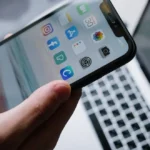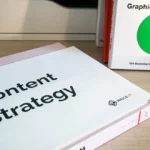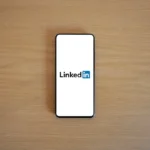Right, so I was grabbing a coffee with Cerys the other day, and we got talking about LinkedIn. Not just the usual, ‘polish your profile’ stuff, but how to really use it to drum up new business. Specifically, we were diving deep into hyper-personalized content and how it can transform your lead generation. It was a real ‘aha’ moment for me, and I wanted to share what we uncovered.
“Look,” Cerys said, stirring her latte, “everyone talks about creating content, but are you actually talking to anyone? I mean, really talking to them, understanding their problems and offering genuinely useful solutions?” That hit home. I realised I’d been blasting generic content hoping something would stick. Turns out, that’s like using a shotgun when you need a sniper rifle.
Defining Your Audience: Buyer Personas are Key
First things first, we had to get crystal clear on who we were trying to reach. We talked about creating detailed buyer personas. Think of it like this: instead of targeting “IT managers,” you target “Sarah, the CIO of a mid-sized fintech company struggling with legacy system integration and concerned about data security.” Suddenly, you’re not just talking to a job title, you’re talking to a person with specific fears, hopes, and needs.
We broke down the process: conduct interviews with existing clients, analyse your CRM data, and survey your target audience. What are their biggest pain points? What keeps them up at night? Where do they go for information? What are their aspirations for their company?
Crafting Content That Resonates
Once you have these personas fleshed out, the real magic happens. You start creating content that speaks directly to them. Forget generic fluff; think tailored solutions.
For example, if Sarah (our CIO) is worried about data security, you might write an article titled, “Five Unexpected Ways Your Legacy Systems are Exposing Your Data (and How to Fix Them).” Instead of a bland sales pitch, you’re offering valuable insights and demonstrating your expertise in a way that directly addresses her concerns. You can even use examples from her industry to show you understand the unique challenges of financial institutions.
Cerys suggested going beyond just articles. Videos, infographics, even short LinkedIn polls can be incredibly effective. Imagine a video demonstrating how your solution helped a similar fintech company overcome their integration challenges. That’s far more compelling than a generic product demo. The key is to use the same language and address the same pain points that Sarah herself would use when describing her problems. No jargon or high-level concepts that you wouldn’t use when having a conversation with her.
Hyper-Personalization in Practice
Let’s say you’ve got another persona: “Mark, the ambitious CTO of a rapidly growing SaaS startup, focused on scaling operations and adopting cutting-edge technologies.” Mark’s interested in innovation and future-proofing his company. Your content for Mark might focus on topics like AI-powered automation, serverless architecture, or the benefits of a cloud-native approach. You could share a case study about how another SaaS company successfully scaled using your technology, highlighting the cost savings and performance gains.
Another good option is to look at the industry of each of your personas and focus your content around that, not just the persona.
Engagement is Everything
Creating great content is only half the battle. You need to actively engage with your target audience. Join relevant LinkedIn groups and participate in discussions. Share your insights and answer questions. Don’t just promote your own content; share valuable resources from other sources as well. The goal is to position yourself as a thought leader and build trust.
Cerys emphasized the importance of listening. Pay attention to the comments and feedback you receive on your posts. Use this information to refine your content strategy and better understand the needs of your audience. This level of engagement makes sure you are understanding your audience as you try to engage with them.
Call to Action: Make it Relevant
Even your call to action needs to be personalized. Instead of a generic “Contact us for a demo,” tailor it to the specific content and the persona. For Sarah, it might be, “Download our free guide on securing your legacy systems.” For Mark, it could be, “Schedule a consultation to discuss how our AI-powered automation can help you scale your operations.” Always provide value upfront and make it easy for people to take the next step.
In our discussion, we realised that the key to LinkedIn success isn’t just about broadcasting information; it’s about building relationships. By understanding your buyer personas and crafting content that resonates with their specific needs, you can transform LinkedIn from a passive job board into a powerful lead generation engine. So, ditch the generic content and start speaking directly to the people you want to reach. You might be surprised at the results.











